Can the Suunto Vertical 2 convince a Garmin-using trail runner to switch?
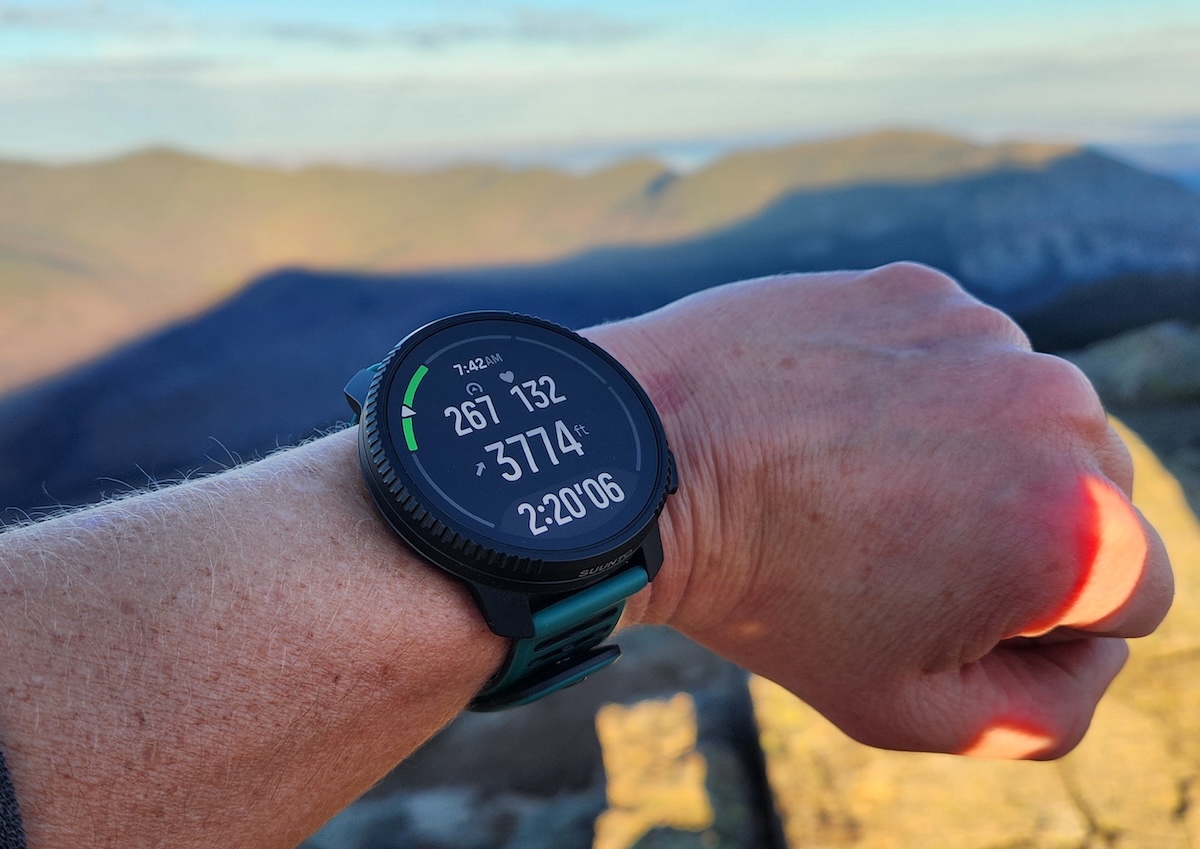 Designed for adventures, the Suunto Vertical 2 promises to help users navigate unfamiliar terrain, ascend peaks, and provide everyday insights. These promises appeal to me, a trail runner seeking longer and steeper adventures.
Designed for adventures, the Suunto Vertical 2 promises to help users navigate unfamiliar terrain, ascend peaks, and provide everyday insights. These promises appeal to me, a trail runner seeking longer and steeper adventures.
Most recently, I had been using a Garmin Vivoactive 5 but was excited to switch to a more adventure-oriented device.
The Suunto Vertical 2 offered all the features I wished for in an adventure watch – multiple sport options, an altimeter, a reliable heart rate sensor, a long battery life, and many more.
Since receiving it, I’ve grown to appreciate the thoughtful, rugged design and helpful insights.
Who Is It Good For?
- Novice Runners With AI coaching and entry-level training plans, this watch can help novice runners tackle new challenges.
- Current Garmin-Users Garmin users will appreciate Suunto’s long battery life, high-quality construction, and multiple sport options.
- Trail Runners: Trail runners will love the Vertical 2’s climb guidance, navigation, and trail-specific run mode. The watch’s long battery life (65 hours in training mode) ensures that runners can record most epic events.
- Daily Usage: The Vertical 2 provides great daily fitness metrics, including calorie usage, step count, and sleep data. Its sleek but sturdy appearance is office-approved.
- Value for Price: Suunto Vertical 2’s $599 price tag is a reasonable value, considering its materials and capabilities. In comparison, Garmin’s multisport watch, the Fenix, starts at $799.99.
Suunto Vertical 2 Review
The day I opened my Suunto Vertical 2, I had planned a 27-mile adventure run/hike in the mountains.
While I would have preferred to spend a few days getting to understand my watch before the event, I was glad to have its companionship. The brilliant AMOLED screen showed my distance and elevation change as I progressed through the day.
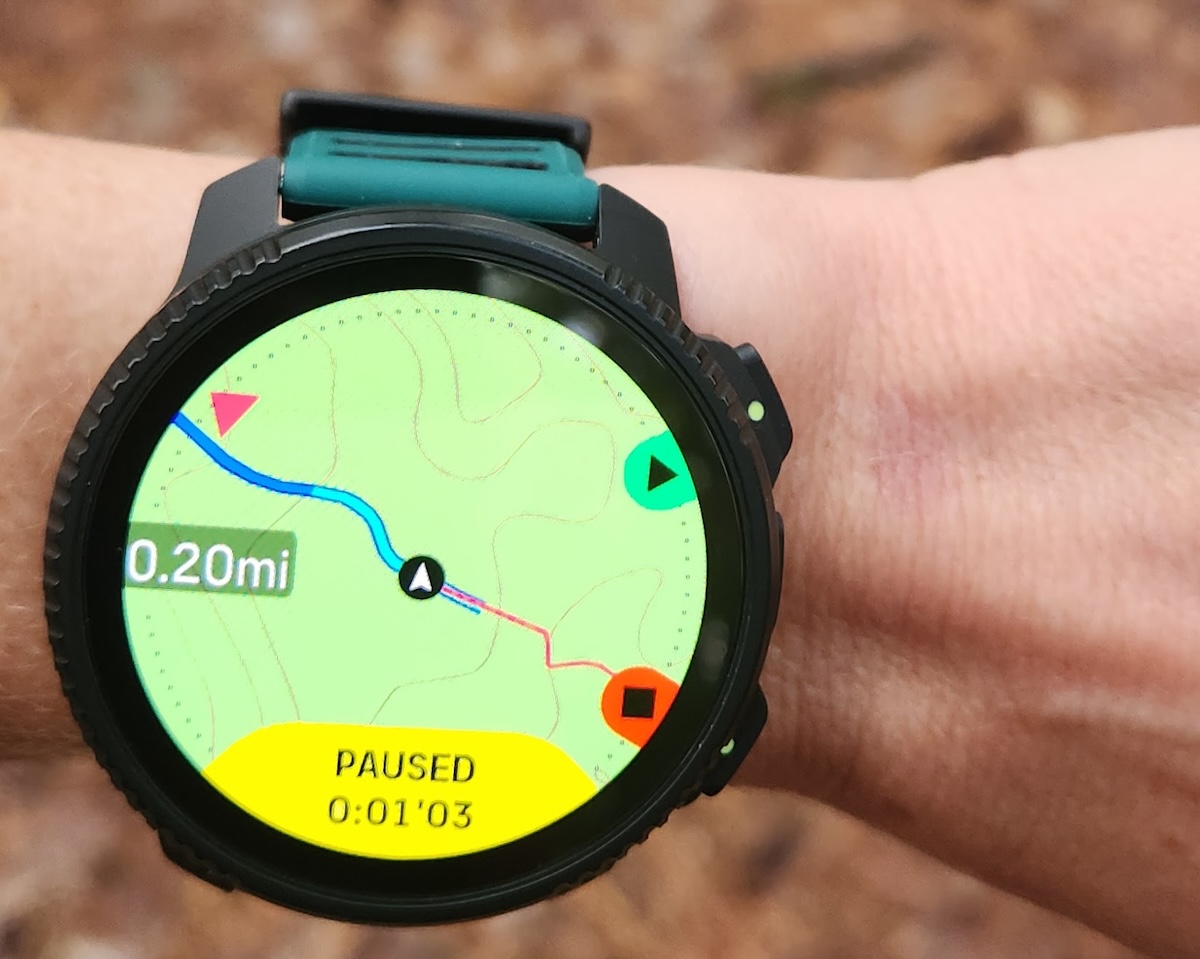 On my mountain run, my companion wore his Garmin Forerunner, and we were able to compare how each watch tracked the run. Since my watch was fresh from the box and we were without cellular service, I could not download maps or courses onto my watch.
On my mountain run, my companion wore his Garmin Forerunner, and we were able to compare how each watch tracked the run. Since my watch was fresh from the box and we were without cellular service, I could not download maps or courses onto my watch.
Instead, we used his watch to navigate. A week later, we completed a shorter adventure, using my watch to plot our course.
Both watches finished with comparable mileage and elevation. Both watches allowed us to successfully plan and execute runs in unfamiliar territory.
We found it easier to use the Garmin’s navigation controls on the watch (perhaps because we were more familiar with Garmin). But we loved how intuitive it was to plot a course on the Suunto App.
This feature has enabled me to plot more courses and tackle unfamiliar paths. Generally, I enjoy exploring new territory, but I always fear my faulty sense of direction will lead me astray.
I compensated by seeking out-and-backs or frequently checking my location on my phone. Now, I can trust my watch to get me home without too many “bonus miles.”
We also appreciated how the Suunto Vertical counted down the miles remaining on our planned trip and let us know when we were climbing one of the bigger ascents. This information helped us stay on pace as well as our course.
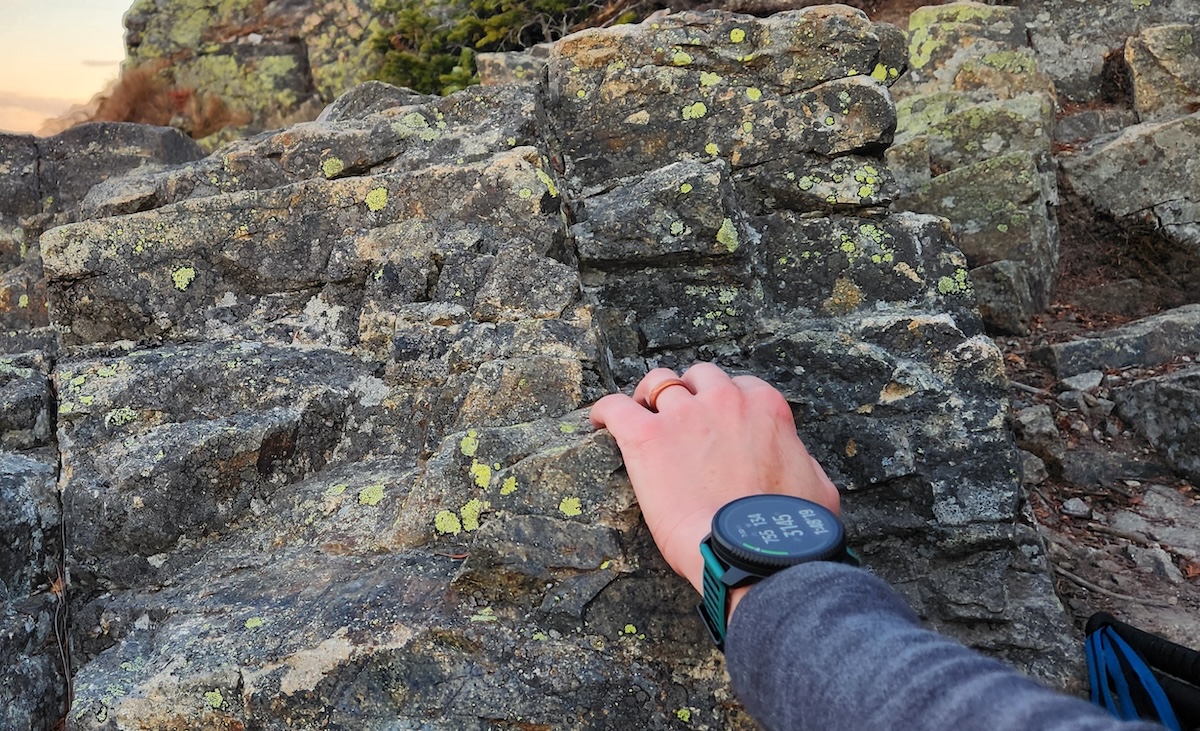 After these test runs, I felt confident – except for a few gripes I will discuss later – that the Suunto Vertical 2 was a solid contender to my running partner’s Garmin Forerunner.
After these test runs, I felt confident – except for a few gripes I will discuss later – that the Suunto Vertical 2 was a solid contender to my running partner’s Garmin Forerunner.
Suunto Vertical 2 Specifications
- Weight: Steel 87g, Titanium 72g
- Diameter: 49mm
- Waterproof Rating: Up to 100 meters
- Altimeter Resolution: 1 meter, uses combined GPS and barometric altitude
- Satellite Systems: Dual-band, multi-satellite GNSS positioning system (will adjust with battery life)
- Routes Accepted: GPX, KML, Offline maps, self-created routes
- Screen: AMOLED
- Operation: Touchscreen + 3 buttons
- Battery: 65 hours in training mode, 75 hours with single band training, 20 days in smartwatch mode, and 30 days in standby time mode
- 115 sport modes available
- Available in 4 colors: All Black, Arctic Gray, Canyon, and Pine Green
- Music: Controls on watch
- Vertical 2 available at us.suunto.com: Stainless Steel: $599; Vertical 2 Titanium: $699
Quick Take
Pro
- Reasonably priced and durable
- Tracks calories, blood oxygen levels, fatigue, and sleep
- Navigation using satellite and downloaded maps
- Multiple sport options available
Con
- Cannot remove sports from the watch
- Heavy
- Some widgets feel a little “off”
Activity Tracking
Suunto monitors multiple metrics that contribute to an athlete’s general health. Although data from a watch is not as reliable as medical-grade equipment, it does provide some useful insights.
At night, the watch records sleep quality and quantity and heart rate variability (HRV). HRV can be an indicator of both mental and physical wellbeing. And while no watch provides perfect measurements, they can show changes in HRV, which might be an early warning sign of stress.
 The watch also quantifies other useful fitness data, including an estimated caloric burn and a step count.
The watch also quantifies other useful fitness data, including an estimated caloric burn and a step count.
I appreciated that Suunto Vertical will track my progress over time, displaying it as a graph. It also collects three different metrics to determine fatigue.
The statistics and charts appear on a dashboard on the app. With a quick glance, I can see a summary of my fitness.
Granted, I don’t need a watch to tell me that I tossed and turned in the middle of the night or if I’m in the peak of a training plan, but I appreciate seeing these intangibles quantified. Sometimes I am even encouraged to see that I didn’t spend as long not sleeping as it seemed.
General Smart Watch Features
Suunto Vertical 2 has a clean, intuitive interface. Users can select a variety of watch home screens and customize which widgets are displayed.
The AMOLED touchscreen allows users to quickly scan the widgets, which include an alarm, weather, fitness stats, and media controls.
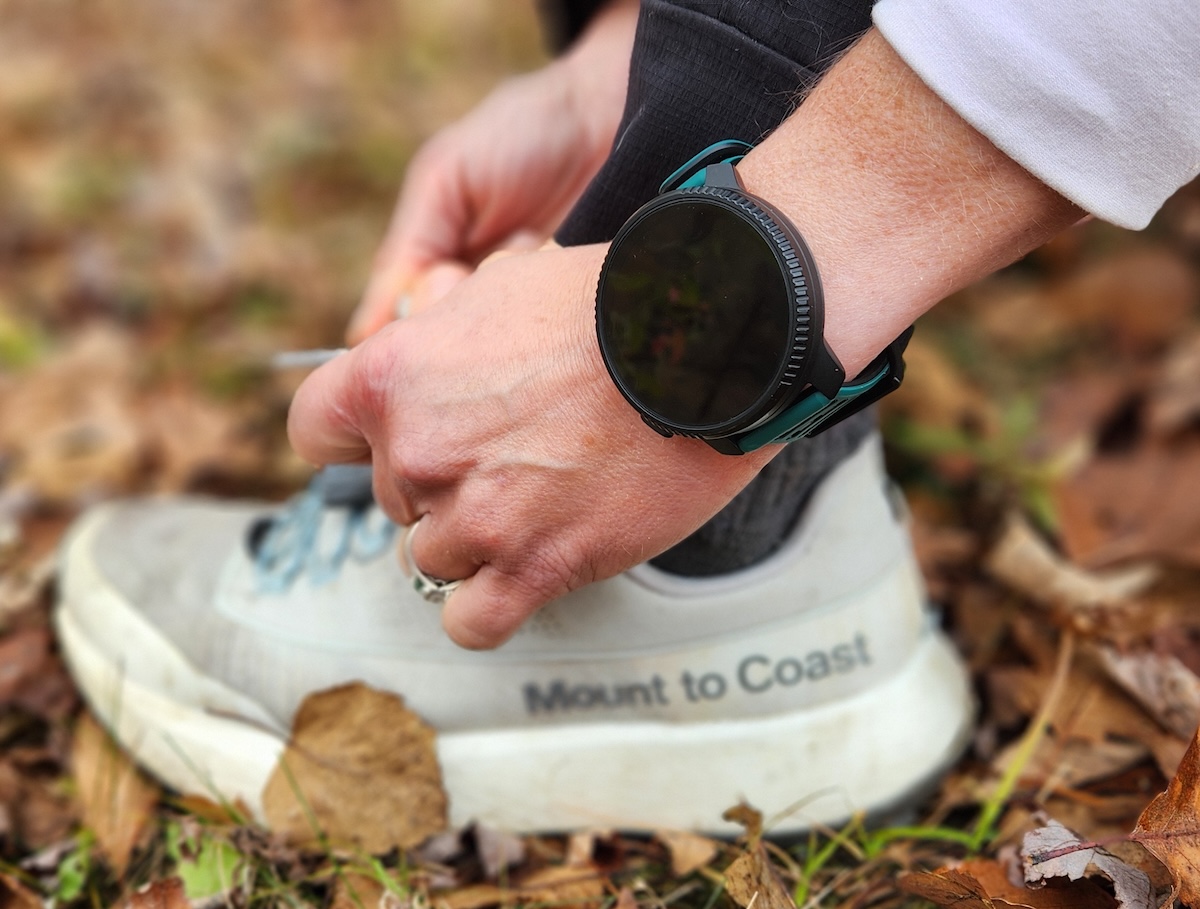 I also love that the watch includes a built-in flashlight. I found myself using it while walking to the car after a gathering and when trying to stealthily prepare for my day without waking my husband.
I also love that the watch includes a built-in flashlight. I found myself using it while walking to the car after a gathering and when trying to stealthily prepare for my day without waking my husband.
Sport Mode and Options
The Vertical offers 115+ sports modes. Every sport, from mermaiding to backcountry touring to treadmill running, can be individually tracked.
Runners can select basic running, interval running, trail running, treadmill running, track running, and vertical running. Other running options include triathlon, obstacle racing, and track and field.
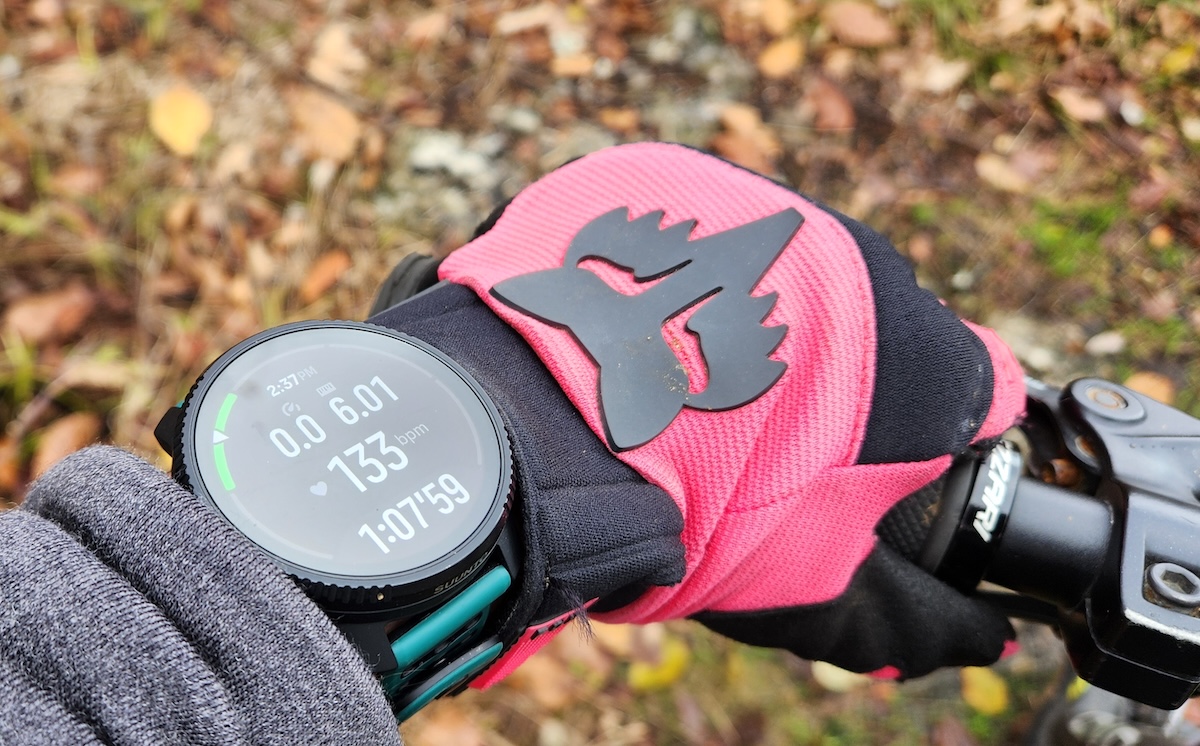 Each sport mode can be customized on the watch, and the settings saved. This specification and customization can benefit runners who have different priorities for different run types. For example, many runners focus on pace during track runs and intensity zones while on trails. The runner can set the track run mode to show their pace and the trail running to display heart rate.
Each sport mode can be customized on the watch, and the settings saved. This specification and customization can benefit runners who have different priorities for different run types. For example, many runners focus on pace during track runs and intensity zones while on trails. The runner can set the track run mode to show their pace and the trail running to display heart rate.
However, the volume of sport modes can feel overwhelming and initially made it difficult to find the sport I wanted. This was too much even for me – a multi-sport athlete (dabbler?). I primarily compete as a runner, but I regularly use my mountain bike and gravel bike. In the winter, I cross-country ski, alpine ski, and backcountry ski. But even for me, there are too many sports options available.
I was able to add my favorite sports to a short list. This list of favorites appears first on the watch. The short list reduced some of my overwhelm, but I would prefer to remove some of the sports from the watch. If this option exists, I haven’t discovered it yet.
Navigation
I used the Suunto to navigate two of my trail runs, one in a known trail network and the other in a less familiar location.
The app made it incredibly easy to plan my route. I set up a route while my running partner drove to the trail. In the app, I selected my starting point and a destination. Then I chose my preferred surface – any path, any road, or paved road. Users can even specify whether they wish to avoid hills – a feature bikers should appreciate! After I selected my destination, I could plan my return manually or let Suunto find the quickest path back.
During my runs, I could see both the planned trail and my own trail of breadcrumbs. The turn-by-turn navigation provided clear directions on where to go. When I veered off path, I used the breadcrumb trail to backtrack and find my planned route again.
Users can import GPX and KML files, which most races provide to help runners. Frequently, I find myself running alone during trail races, and the additional guidance will give me confidence that I am staying on course.
Climb Guidance
Suunto Vertical 2’s climb guidance has been unexpectedly useful. Used as part of a navigated run, the guidance can tell you how many hills you have remaining. It can also provide the grade value of the hills in percent or degrees.
This information can help trail runners strategize. If we are facing our first hill of several, then we may want to run easily or even hike fast. If it’s the last hill of the day, we can give it our all.
Training Stats, Tools, and Guidance
The Suunto Vertical 2 offers an impressive range of training tools.
On the app, users can build workouts and import them to their watch. I use this feature often when preparing for a longer race and consider it a non-negotiable for a smart watch. The intervals can be set to a target pace, heart rate zone, or speed. (Power is also an option, but as it applies mostly to cyclists with bike computers, I don’t plan to use it.)
These workouts can be scheduled in the calendar, which shows a log of previous activities as well as planned workouts.
If I don’t want to use my own plan, SuuntoPlus, which is included in the Suunto App, provides guidance and AI coaching.
Users can select various training goals. The Suunto AI Coach then creates a plan tailored to their goal, preferred activities, and availability. I loved that the coaching plans included more than the typical 12-week race-focused plan. Options include off-season training and race training for multiple distances and goals.
To test this function, I selected a base training plan that incorporated weight training, mountain biking, and running. I prefer paper plans because I can adjust my run schedule around my life.
If I’m busy, it’s easy to swap a longer run for a short one and make it up the next day. Other AI coaching plans would allow me to shift runs but not swap them. They also would mark an exercise incomplete if I had to finish early. As I tested it, I appreciated that the AI coach showed what percentage of the plan I had completed. My activity wasn’t all or nothing.
There are several features I haven’t tried yet, but look promising. For example, the Ghost Runner helps runners maintain a goal pace. I’d love to try this during a race or harder workout. I also hope to use some of the drills on SuuntoPlus to assess my fitness over time. These include several VO2 estimators, like the Cooper Test.
A Few Miscellaneous Gripes
This watch offers so much, but a few features feel off – close but not quite right.
For example, I like that the watch includes a weather widget, but the forecast only displays the next 8 hours – not the rest of the week or even the rest of the day. On my Garmin, I used the weather widget to plan my upcoming workouts.
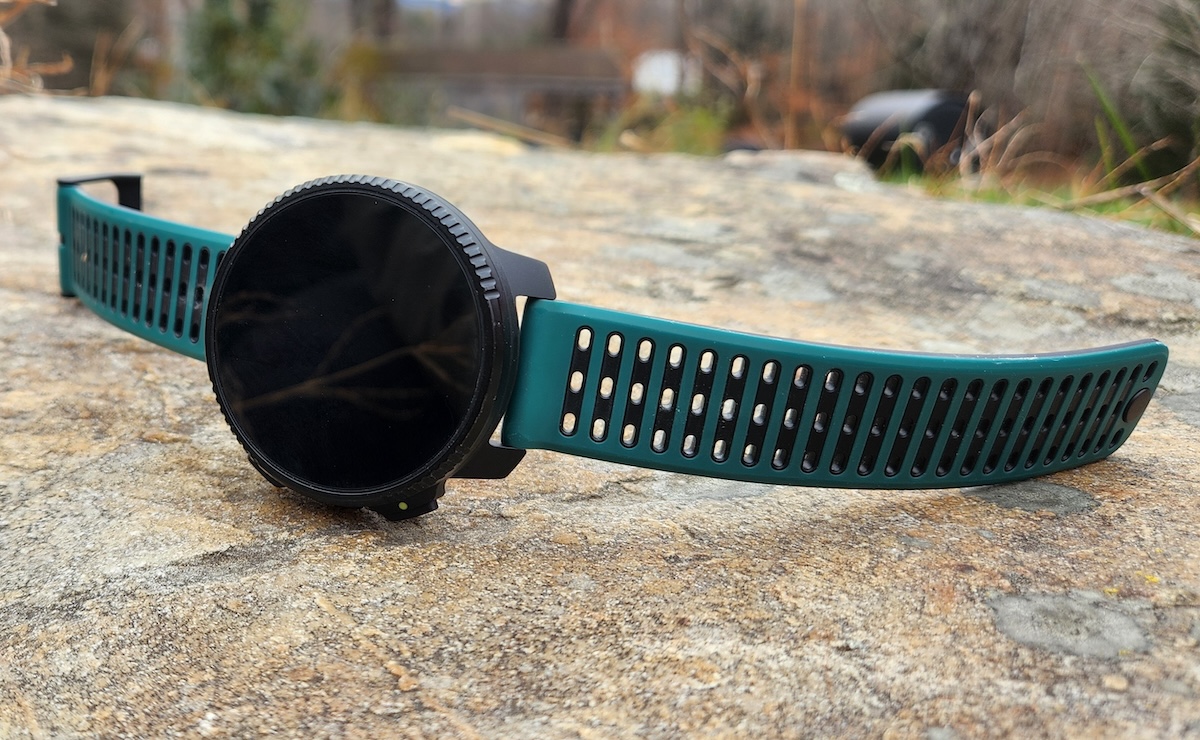 I would decide which days to schedule outdoor adventures and which to spend in the gym. I also like to lay out my workout gear the night before an early morning session. With an 8-hour forecast, I cannot prepare ahead of time without looking at my phone.
I would decide which days to schedule outdoor adventures and which to spend in the gym. I also like to lay out my workout gear the night before an early morning session. With an 8-hour forecast, I cannot prepare ahead of time without looking at my phone.
That being said, as a backcountry enthusiast, I was thrilled to see that the Vertical 2 includes avalanche maps and inclement weather warnings.
Another good idea that isn’t quite right is the feelings tracker. The selection did not align with how I wanted to track my efforts. The watch allows users to track how they feel after an activity.
Emotions – especially perceived rate of exertion – can be a great indicator of how difficult an activity was. But the Vertical’s feeling tracker doesn’t track exertion but instead focuses on emotional well-being.
For example, after a sprint workout, the watch asked if I felt excellent, very good, good, average, or poor. I felt exhausted, powerful, and even proud. So very good? Maybe??? I would appreciate tracking these emotions at the end of the day, but not after a workout.
I suspect that with user feedback, these functions will be updated and improved.
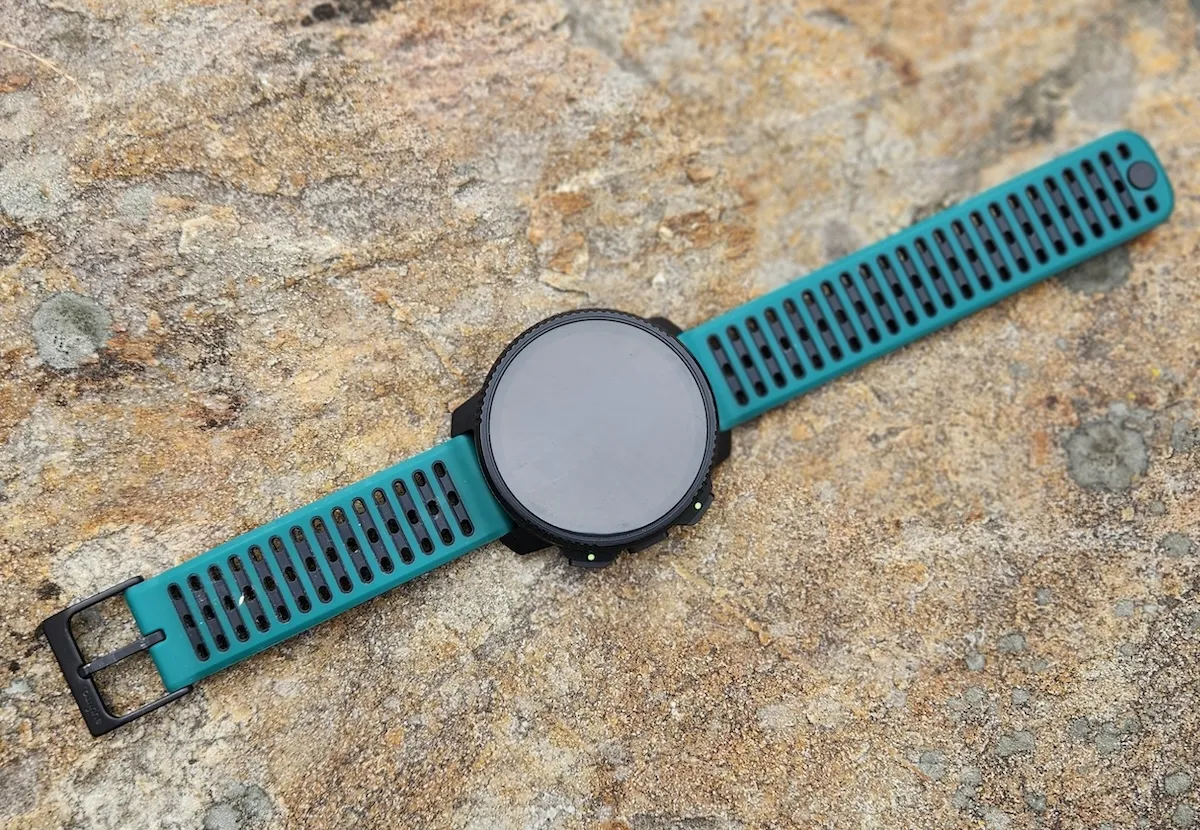 A few other functions are less intuitive to use. I had to look up directions for how to zoom out while in navigation, and I spent some time looking for the interval I created in the watch. These issues were resolved as I became more familiar with the watch.
A few other functions are less intuitive to use. I had to look up directions for how to zoom out while in navigation, and I spent some time looking for the interval I created in the watch. These issues were resolved as I became more familiar with the watch.
The Suunto Vertical 2 allows runners to explore new territory confidently. Those who enjoy multiple disciplines or who are looking to pursue ultramarathons would find this watch particularly attractive. Its long battery life, navigation, and climb guidance make it a great uphill companion.
I’m looking forward to a long relationship with this watch.
Who Tried It?
Becky Trudeau lives in New Hampshire and enjoys trail running in the mountains near her home. She has completed multiple half marathons, a mountain marathon, and a 50k with 7,000 feet of elevation. When not running, you may find her mountain biking, backcountry touring, cross-country skiing, or reading a mystery.



 Keen Roam Review | Lightweight Trail Shoe That Goes Everywhere (Except Slick Rocks)
Keen Roam Review | Lightweight Trail Shoe That Goes Everywhere (Except Slick Rocks)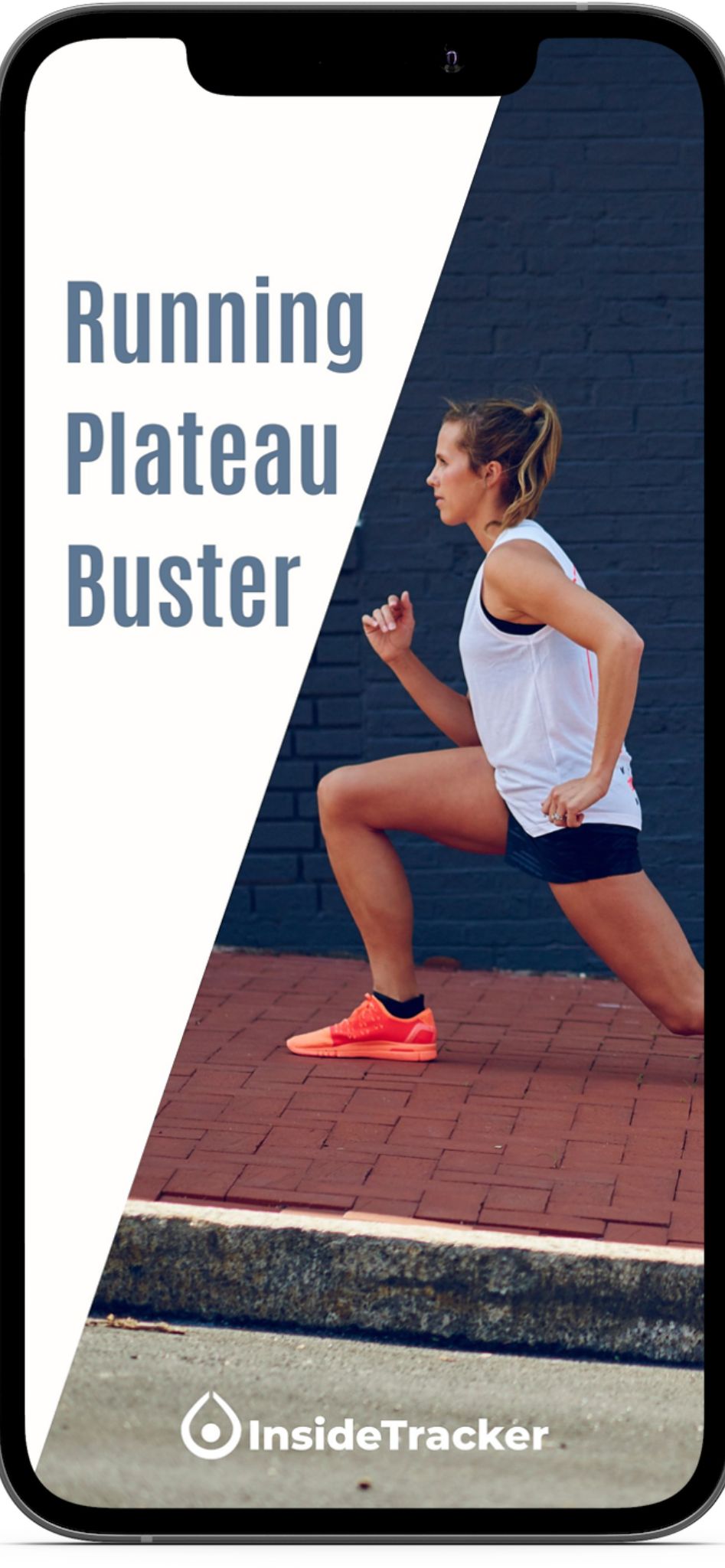
Leave a Reply